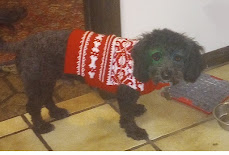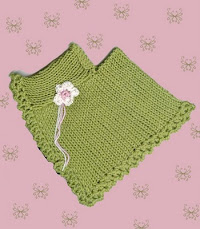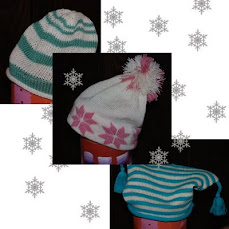
Had a request to post the directions for a loopy fru fru scarf. It was on my blog at one time, but I must have deleted it. Be forewarned, it's not a fast knit, but it's kind of fun - if you like doing odd things on the machine like I do. You need some interesting yarn. This is made of one or two balls of ribbon yarn. It has some nice colors. Can't remember where I bought it, but most yarn shops have such a yarn. Most people have that one odd (expensive so you could only buy one, but it was irresistable) skein of yarn that was an impulse purchase and it sits in the closet not knowing what to do with itself. This project is ideal for such an orphan.
Some yarns will make a more decorative accessory; some will make a serviceable and warm scarf. It just occurred to me that I might use yarn from that giant cone of chenille to make the loops. Hmmmm......... as long as it never gets laundered, might work. Anyway, on to the instructions as to how to make this wonder of the knitting world.
DIRECTIONS
This fru fru-ness can be made on any machine. You need one hand knitting needle, a large one is preferable because it's easy to hang onto, but any will do. My first attempt was using the gate pegs of the ribber to do the loops, but I didn't like it as much as using a knitting needle because some splitting occurred on the sharp gate pegs and unless I wrapped the yarn really loosely, it was hard to pull the loops off the gate pegs. Also, the loops didn't get very long because even at the lowest position the distance from the main bed wasn't so great. For the main yarn choose a matching or coordinating color, a fairly thin yarn, any type, as many ounces as you want the scarf to be wide and whatever length will accommodate the novelty yarn length. How's that for helpful, precise information? (It’s best to have the main yarn be thin so that the scarf doesn’t get too heavy.) The tension you use on your machine needs to be loose enough to knit both the main and novelty yarns together. I used the largest T on the standard machine for the one pictured.
Here's the basic moves:
This is one of those things that is harder to describe than to do. Ewrap with main yarn over 7 or more needles. Knit 2 rows and hang a weight. Basically you are making use of the hand knitting needle to create loops that are of equal size and they are woven into a strip by wrapping the novelty yarn over the main bed needles. Position the hand knitting needle the same distance from the main bed each time it is used. The distance below the main bed that you position the needle horizontally will determine the length of the loops. Hang onto the knitting needle with your left hand, wrap the yarn and do the carriage with your right hand. Put the weaving brushes into work if your machine has them. You will wind over every other top N and down under the knitting needle, repeating across every other main bed needle.
Each row push out to E position the N that you are going to hang novelty yarn over to make it easier to wrap. You don’t have to e-wrap the main bed needles, just loop the yarn around. After winding across the needle bed, hang on to the end of the novelty yarn with one hand and push the carriage across with the other. Then remove the knitting needle and repeat but use the opposite main bed needles, every other one. You'll be knitting and wrapping in the opposite direction because the carriage will be on the other side, of course.
When the carriage is on the right, ready to knit, the hand knitting needle will have the empty point facing right. When the carriage is on the left, ready to knit, the hand knitting needle will have the point facing left. This way you can use the point to pick up the yarn more easily and pull it off the loops more easily. This will make more sense to you when you get going.
The drawing below shows you how to wind the yarn. You don’t need to use your row counter, unless you want a repeat performance in the future. You can just merrily knit until you run out of novelty yarn. Check occasionally to make sure the yarn isn’t caught up on the gate pegs.

Here's a closeup of the stitches. I think I used 7 main bed stitches for this scarf.





































































No comments:
Post a Comment